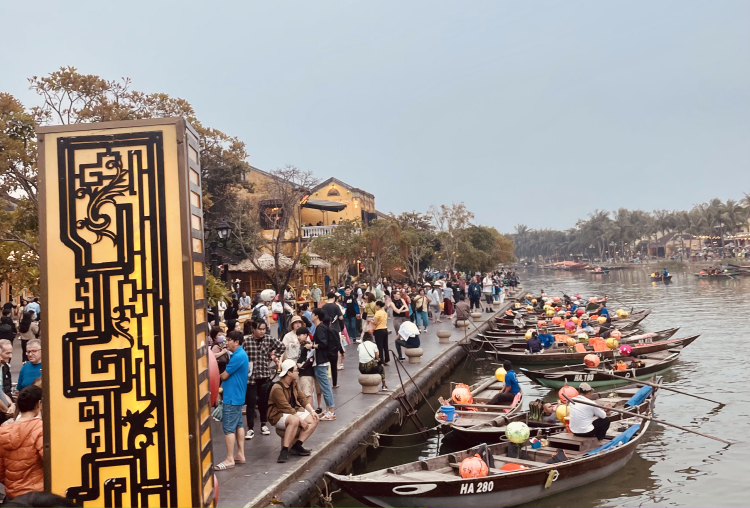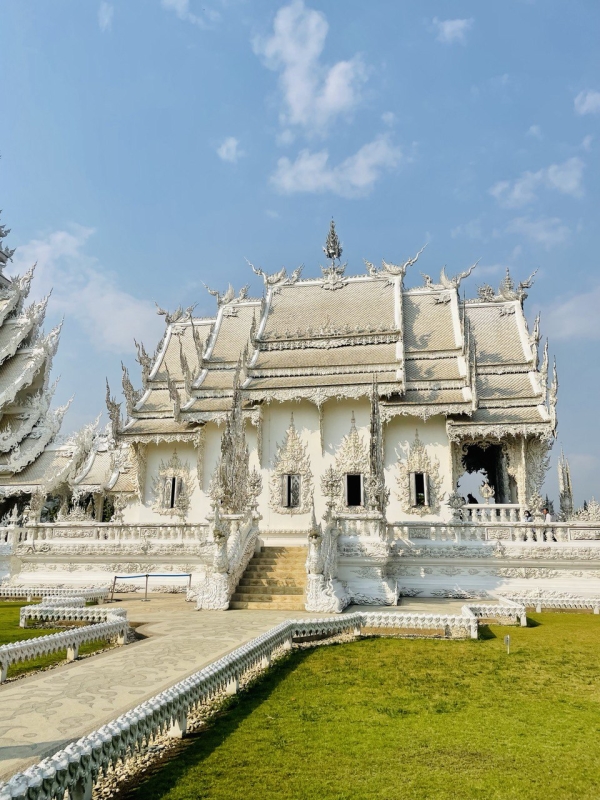My Experience Working Remotely in Asia and Tricks to Make it Work

Just a few months have passed since I started working in different cities and villages in South-East Asia, experiencing different cultures and working from a different timezone .
As a software developer, I have come to the conclusion that working from Asia to Europe is perfectly manageable and achievable.
However, this requires some experience and knowledge of certain tricks to avoid unnecessary headaches.
Therefore, the goal of this article is to provide some suggestions and inspire others to do the same.
Many digital nomads are working from Southeast Asia, and the majority choose to stay in Bali, Indonesia, but from my experience, it has become too touristic and crowded losing its authenticity. What I suggest is to consider Thailand, Vietnam and Cambodia , because are great spots for digital nomads, with a good internet connection, and a good lifestyle balance with many leisure activities and places to visit.
The Digital Nomad Lifestyle: Balancing Work, Leisure, and Exploration
When you travel as a tourist, you want to stay in many cities, visit tourist places, go to restaurants every day, and see the sights.
Digital Nomad life is singularly different. Priorities are different, and life goes slower because you are living in the place. You must prioritize your work deadlines and try to balance your time.
You are not in a rush because you have more time to stay in the city. You have the opportunity to discover hidden places that typical tourists won't have time to visit.
You can try to live like a local, building your own routine and balancing sports, work, and spare time. The routine is personal and changes depending on the weather of the city, your job schedule, and the neighborhood where you are staying.
For example, if you like running, going for a run on a day with 35º Celsius is not recommended and very unpleasant.
For this reason, I always dedicate the first week in a new place to discover good places to eat, where to practice sports, and where to work.
I would enjoy recommending some places to stay. You can follow me or contact me on LinkedIn. I would be open to receiving feedback or chatting with you.

Photo of the main pagoda of the White Temple, in Chiang Rai, Thailand.
Managing Work in the ICT Timezone: Tips and Tricks
Indochina Timezone (ICT - UCT+07:00) has been adopted by Thailand, Vietnam, Cambodia, and other countries in the same area. The key point is that there is a 6-hour difference from Western Europe (ICT timezone). When it is morning in Europe, it is afternoon here.
After the change to GMT+02:00 (during summer), there is only a 5-hour difference, which makes it more manageable.
From my experience, working with this kind of timezone is perfectly gestionable , unless you have time-bound specific activities, like customer care.
During a normal workday , you can spend your morning on intense activities that require focus and concentration, like programming and writing. In the afternoon, you can organize and schedule your calls .
It is important to communicate an end time to schedule calls because 17.00 CET would be 22.00 or 23.00 ICT. For a good schedule, it is a good practice to schedule all calls before lunchtime in Europe, and during these months, I’ve never had problems with that.
You can start working from 8.00 am or 9.00 am until 12.00 pm, and then look for a local restaurant to eat noodles. After lunch, finish your work and join to the meetings.
(Unless you destroy some database or server in production, no one will write to you at 5.40 am asking you to do something urgently 😄)
With a few changes in time management, working from Asia will be a pleasurable experience.
Decide where to work
Someone prefers working from a café , others in coworking spaces , and some directly in their hotel rooms .
In my opinion, I always suggest choosing a coworking space or café where there are other people working. This allows for socialization and separation of work from your staying.
Going out from the residence can also lead to discovering new cafés , restaurants , and shops , or even visiting a Buddhist temple on the way. It may sound like a joke, but it's true.
If there are no good places to work or the destination is not known for remote work, I suggest choosing a hotel with a good garden or a comfortable desk where one can work peacefully.
This happened to me in Pleiku , a city in Vietnam not known for tourism. There were no cafés or coworking spaces, but I managed to find an apartment with some Vietnamese architects and we shared the living room as a small coworking space.

Photo of a road in chinatown with local market and many people walking on the street in Bangkok
Find some apartments
Finding a good apartment is one of the most complex and important tasks when you are traveling as a digital nomad. Your choice of apartment will shape your daily routine , and every change in apartment can be distracting and generate stress.
I suggest always using well-known platforms such as Airbnb , as they offer protection against misleading listings. Be critical and investigate a little further before booking the place you choose. Look at the neighborhood on Google Street View , search for reviews on Google Maps or other platforms, and read the most negative reviews.
Planning Your City Change
When you decide to change your city, there are a few things to consider before. First, you'll need to choose your destination and find the best mode of transportation. This may involve deciding whether to travel by land or air , here you can consider to get some sleeper bus .
It's also important to plan your transportation with at least 1 or 2 weeks in advance, checking the expiration of your touristic visa .
Some destinations serve only as transit points , necessary for connections to other locations. These can include cities, towns, or villages that may not be particularly noteworthy, but are nevertheless essential to the journey. This is something personal that depends on what you like, big cities and small places.
Before to choose a hotel, Airbnb, or homestay, it's important to research the neighborhood where you'll be staying, if is a safe and peaceful location, or touristic, noisy and chaotic.
This is an hard task, because as the city is unfamiliar, surprises are enough common , what I suggest is to get a place just for some days, in order to get familiarity with the city.
Some cities has entires neighborhoods dedicated to tourism . These areas have modern and well-equipped buildings, but lack of autenticy and culture and you can find more western people than local residents. In these areas you will find many modern and expensive coffee and western restarant than other neighborhoods.

Photo of a temple in Angkor Wat area, Siem Reap, Cambodia
An Example of Bad Experience in Finding Accommodation in Thailand
Chiang Mai is a city located in the northern part of Thailand and is known for its rich cultural heritage, stunning temples, delicious street food, and vibrant night markets.
The city is a very common place for digital nomads, so, don't be surprised to find many western people walking on the street, and unfortunately the best appartment are already booked some weeks in advance.
During the month of February, I faced some challenges when trying to find an appartment through Airbnb. My first attempt was to book an apartment in the city, which was located slightly outside the neighborhood.
However, upon arrival, I realized that it was actually a 15-minute drive from the city center, making it impossible to get around without a vehicle. To make matters worse, the apartment didn't have any wifi, which made it difficult for me to work remotely.
Undeterred, I continued my search and eventually found a room in a condominium in Nimann, a neighborhood known for its large foreign population, but available for only 5 days.
Searching in other neighborhood, I secured a decent apartment in Mueang Chiang Mai District, other district, which allowed me to experience a more authentic side of Chiang Mai. Although further from my coworking space, I could easily get around on a scooter or 20-minute walk.
Tips for Choosing the Right Airbnb in a New City
Searching for an Airbnb in a neighborhood that is not too central , but not too far from the city, where you can reach the center by walking in 10-15 minutes and where there are services such as a supermarket or a seven-eleven nearby.
You can book the Airbnb for as long as you decide to stay in the city, and if you're not satisfied within the first 3 days, the platform allows you to change your booking dates and get a refund in most cases .
It's important that the Airbnb has an internet connection and a table where you can work from home when you're not at a café or coworking space. This is very convenient for making quiet calls.
Consider the neighborhood based on the mobility you want to have , whether you want to move around by foot or by bike. Usually, staying in a slightly more suburban neighborhood or in areas that are not frequented by tourists can give you a very different and authentic experience with the local people.
A small consideration: traveling is not about continuing to live as you do in your home country or surrounding yourself with luxury hotels with pools , but rather trying to understand, know the place, the people, and the culture, from which you can learn a lot...
If you have any questions, suggestions, or would like more advice for your next trip, feel free to reach out to me on LinkedIn . I'm always happy to connect with fellow travelers and help in any way I can. Happy travels!